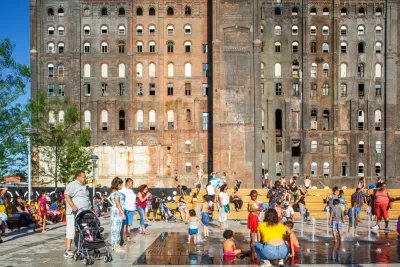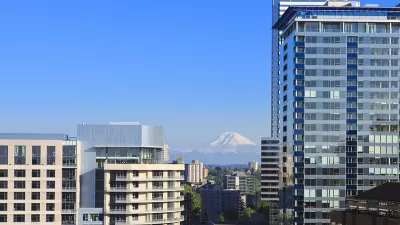The past decade saw more old commercial buildings transformed into residential buildings than any decade previous.

Alexandra Ciuntu explains the findings of a recent study by RentCafé, which quantifies the number of buildings converted from commercial to residential years in a 70-year history of adaptive reuse.
According to the study, the last decade saw more adaptive reuse projects completed than ever, led by Chicago and New York City. Here's how Ciuntu summarizes the nature of adaptive reuse, as well as the key findings of the study:
The U.S. has its fair share of beautiful old buildings — many of them historical — that are often underused or even abandoned. But, through adaptive reuse, they can be repurposed and converted to residential use. This trend took off in last decade, when 778 old buildings were transitioned into apartment communities. In total, 1,876 such buildings have been converted into apartments since the 1950s. From abandoned dispensaries to vintage gramophone factories, we dug into Yardi Matrix data to uncover where these projects are most common and what they were in their past lives.
The article includes several useful charts and infographics to illustrate some of the report's findings, including this breakdown of adaptive reuse projects by decade.
Drilling down to geographic specificity, the report identified the Big Apple and the Windy City as two leading practitioners of adaptive reuse. In terms of numbers of buildings converted, Chicago leads the pack. In terms of number of apartment units created, New York leads the pack. Los Angeles and Philadelphia both appear at the top of the list in both metrics as well.
The study also quantifies the kinds of old commercial buildings most likely to be converted to residential uses, with factories leading the way, just ahead of hotels.
FULL STORY: Yesterday’s Factories, Today’s Apartments: Conversions at All-Time High in the U.S.

Alabama: Trump Terminates Settlements for Black Communities Harmed By Raw Sewage
Trump deemed the landmark civil rights agreement “illegal DEI and environmental justice policy.”

Planetizen Federal Action Tracker
A weekly monitor of how Trump’s orders and actions are impacting planners and planning in America.

The 120 Year Old Tiny Home Villages That Sheltered San Francisco’s Earthquake Refugees
More than a century ago, San Francisco mobilized to house thousands of residents displaced by the 1906 earthquake. Could their strategy offer a model for the present?

LA’s Tree Emergency Goes Beyond Vandalism
After a vandal destroyed dozens of downtown LA trees, Mayor Karen Bass vowed to replace them. Days later, she slashed the city’s tree budget.

Sacramento Leads Nation With Bus-Mounted Bike Lane Enforcement Cameras
The city is the first to use its bus-mounted traffic enforcement system to cite drivers who park or drive in bike lanes.

Seattle Voters Approve Social Housing Referendum
Voters approved a corporate tax to fund the city’s housing authority despite an opposition campaign funded by Amazon and Microsoft.
Urban Design for Planners 1: Software Tools
This six-course series explores essential urban design concepts using open source software and equips planners with the tools they need to participate fully in the urban design process.
Planning for Universal Design
Learn the tools for implementing Universal Design in planning regulations.
Ada County Highway District
Clanton & Associates, Inc.
Jessamine County Fiscal Court
Institute for Housing and Urban Development Studies (IHS)
City of Grandview
Harvard GSD Executive Education
Toledo-Lucas County Plan Commissions
Salt Lake City
NYU Wagner Graduate School of Public Service




























